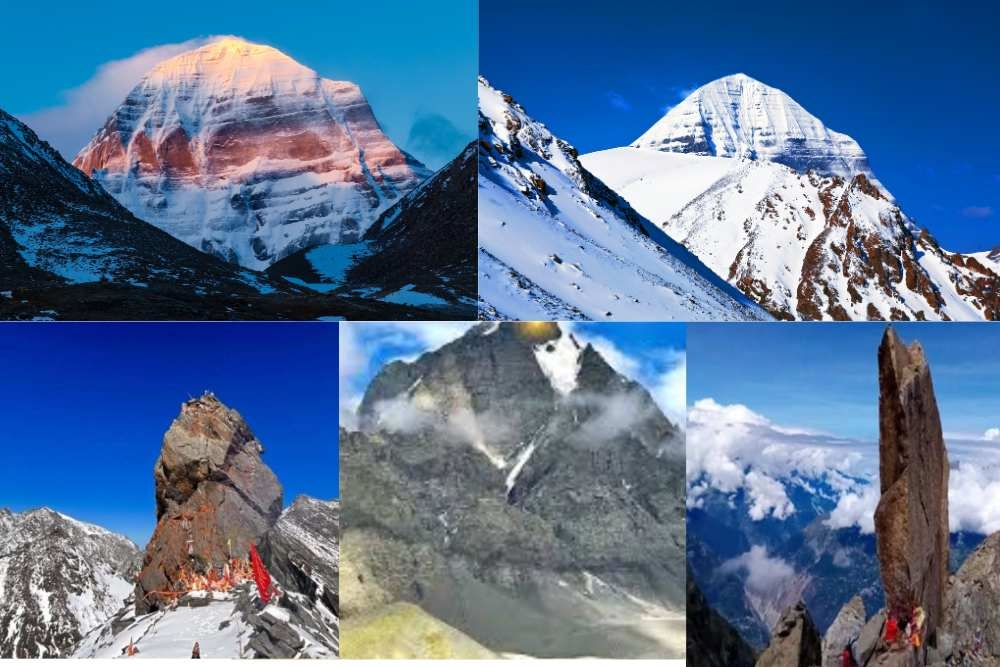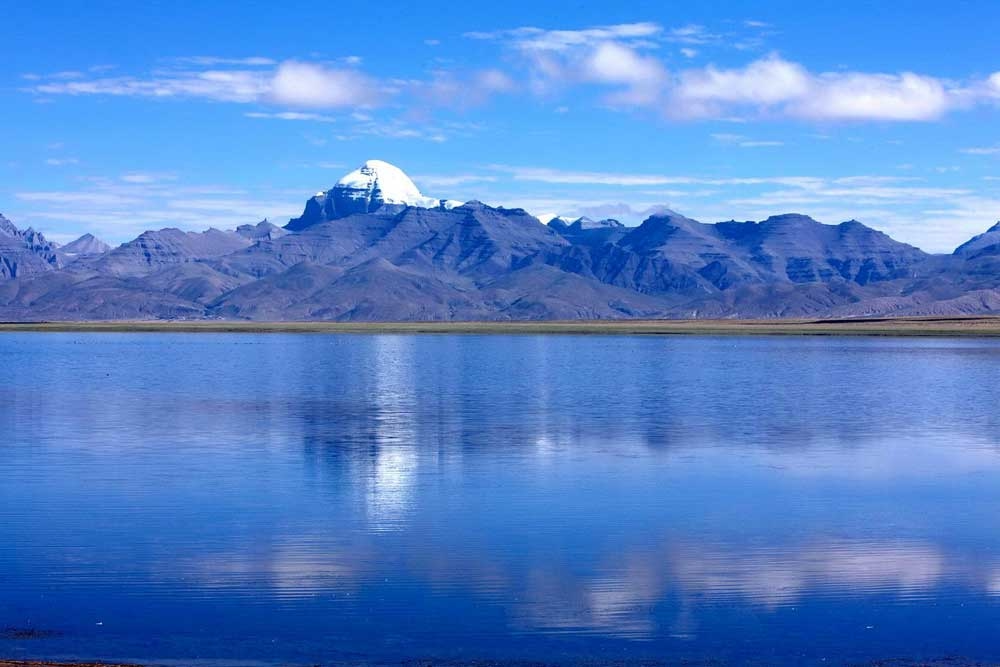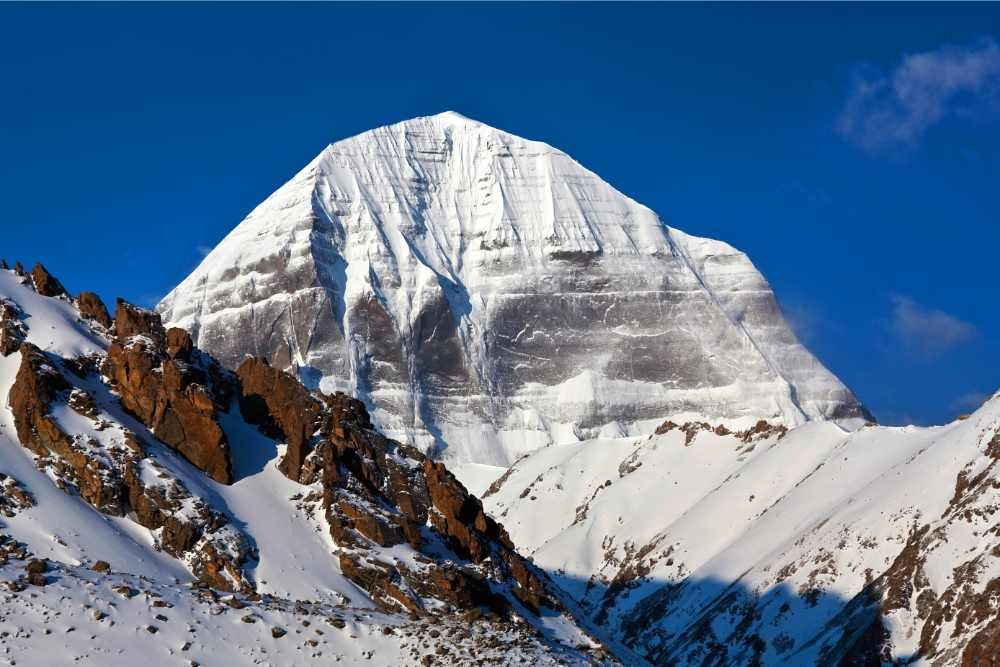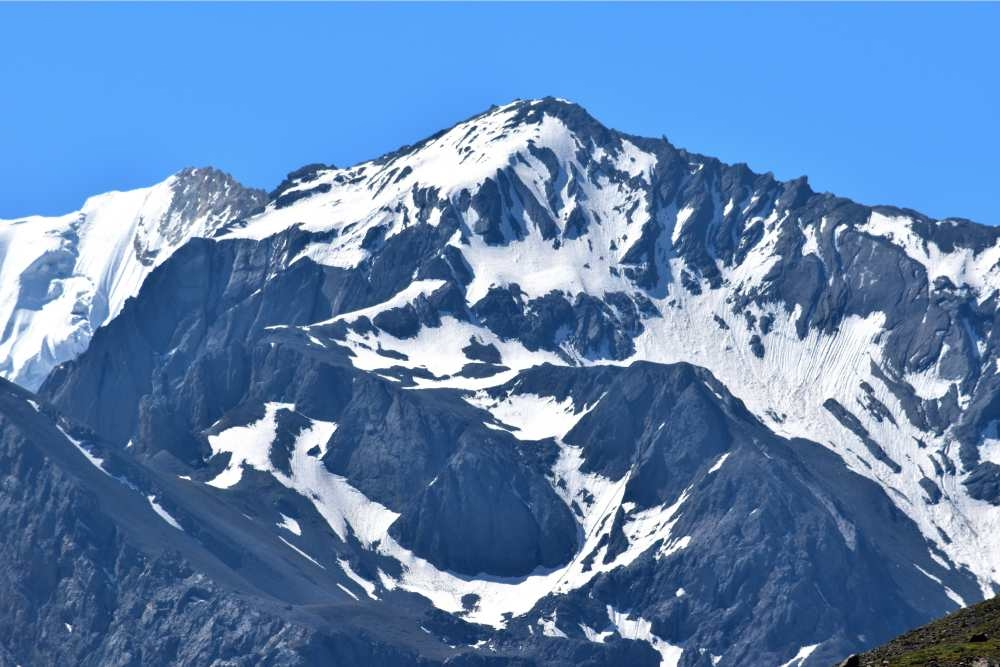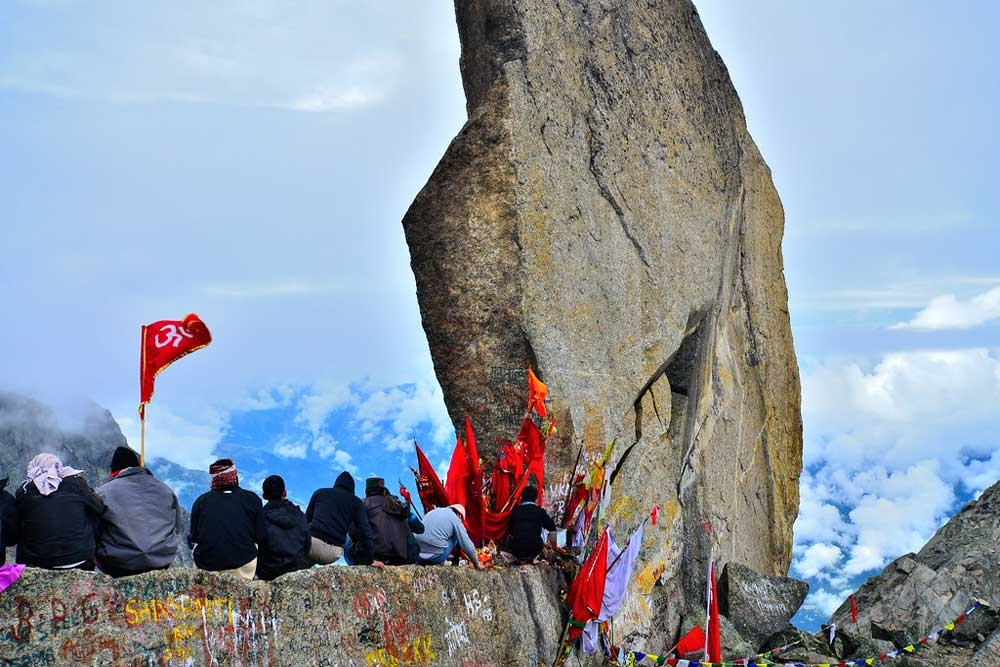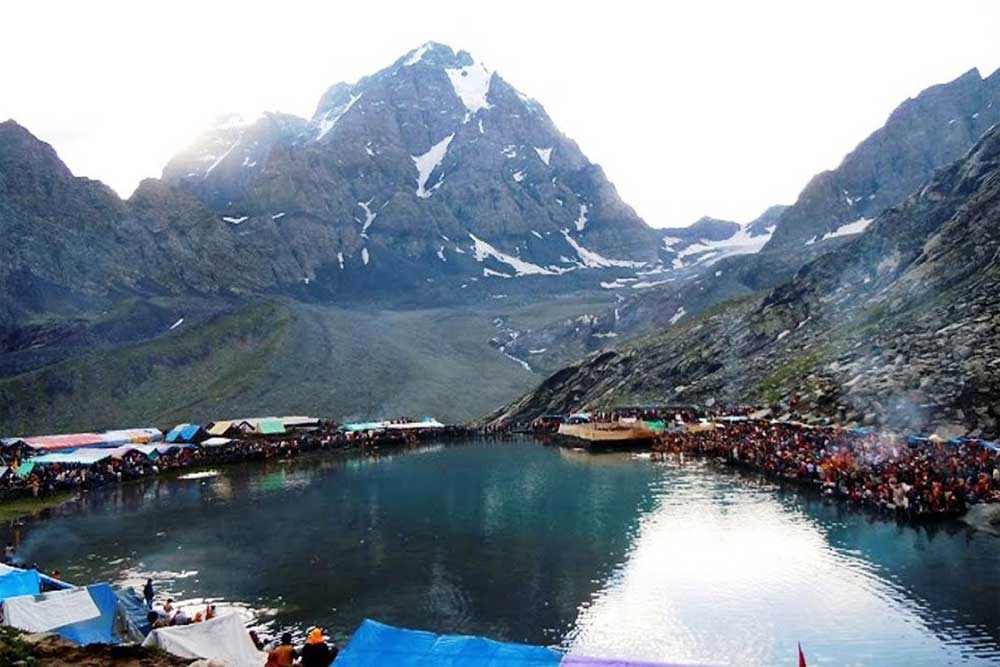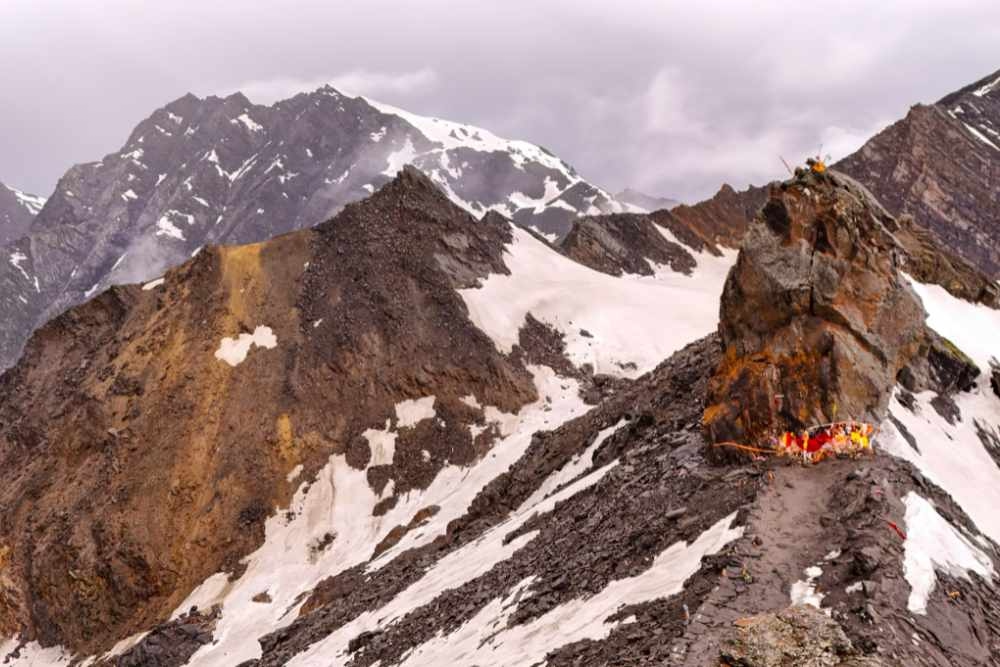There are locations on our planet where nature and spirituality blend seamlessly, creating a timeless experience. The Himalayas are one such wonder, featuring vast expanses of snow-covered peaks and ancient monasteries nestled into cliff sides. Rivers have carved out valleys over centuries, and mountain trails have been traversed by saints, kings, and pilgrims for thousands of years.
For devout Hindus, Buddhists, Jains, and Bon practitioners, the Himalayas are more than just a natural wonder; they represent the heart of creation, the dwelling place of the gods, and the guardian of ancient truths. Among the most sacred sites in this region is Kailash Parvat, a peak regarded as so divine that it is never climbed but only circumambulated in reverence.
This journey will take you through:
- The Panch Kailash pilgrimage
- The spiritual Mansarovar Lake
- The mysteries of Kailash Parvat
- The serene Adi Kailash and Om Parvat
- The adventurous Kinnaur Kailash
- The divine Mani Mahesh
- The challenging Shrikhand Mahadev trek
Along the way, you’ll find travel details, legends, traditions, and practical tips to make your journey smoother and more meaningful.
Panch Kailash – Five Faces of the Divine
Panch Kailash refers to five sacred peaks, each believed to represent different forms of Lord Shiva. Completing pilgrimages to all five is considered one of the highest spiritual achievements.
The Five Kailash Names and Their Significance
- Mount Kailash (Tibet)—The most famous and considered the cosmic axis of the world.
- Adi Kailash (Uttarakhand)—Known as Chota Kailash for those who cannot travel to Tibet.
- Kinnaur Kailash (Himachal Pradesh)—home to the iconic rock Shivling that changes colour with the sun.
- Shri Kailash / Mani Mahesh Kailash (Himachal Pradesh)—Associated with mystical tales of Lord Shiva’s meditation.
- Shrikhand Mahadev (Himachal Pradesh)—Known for its towering Shivling and one of the toughest pilgrimage treks in India.
Each destination offers unique trekking routes, rituals, and stories passed down for generations.
Mansarovar Lake and Kailash Mountain—The Heart of Pilgrimage
Situated at 4,590 meters in Tibet, Mansarovar Lake is a vast expanse of turquoise water, believed to have been created by Lord Brahma.
Meaning of Mansarovar:
- Manas – Mind
- Sarovar – Lake
- This lake signifies the manifestation of divine thought.
Spiritual Importance
- Bathing in the lake is said to wash away sins from all previous lives.
- Drinking its water is believed to purify the soul and bring spiritual awakening.
- In Buddhism, it represents Anavatapta, the mythical lake from which sacred rivers flow.
Standing on its banks, you witness Kailash Parvat rising majestically, its snow-clad peak reflecting in the still waters—a moment etched forever in memory.
Best Time to Visit: May to September (the lake is not frozen, and the weather is milder).
Mount Kailash Tour—Journey of a Lifetime
A Mount Kailash tour is one of the most spiritually and physically demanding pilgrimages. The highlight is the Kailash Kora—a 52 km circumambulation completed in 3 days.
How to Go to Kailash Parvat
- Via Nepal: Kathmandu → Taklakot → Darchen (trek starting point).
- Via Tibet: Requires Chinese permits and organised tours.
Kailash Parvat Mystery
No one has ever climbed the mountain. Legends suggest supernatural forces prevent it. Climbers have reported sudden weather changes and an overwhelming compulsion to turn back. Even scientists note unusual magnetic anomalies here.
Trek Difficulty: Moderate to difficult due to high altitude (over 5,600 m at Dolma La Pass). Proper acclimatisation is essential.
Adi Kailash and Om Parvat—A Hidden Gem
In Uttarakhand’s Kumaon region lies Adi Kailash, also known as Chota Kailash. Its shape resembles Mount Kailash and offers a similarly sacred experience without the complexities of travelling to Tibet.
Along the route, pilgrims encounter Om Parvat, where snow naturally forms the sacred “Om” symbol—visible only under clear weather.
Adi Kailash Yatra
- Starting Point: Dharchula
- Passes through villages like Gunji and Nabhi.
- Duration: 10–15 days, depending on route and pace.
Adi Kailash Temperature
- Summer: 5°C–15°C (pleasant)
- Winter: -5°C to -15°C (trek not recommended).
Kinnaur and Kinnaur Kailash – Land of Gods and Legends
Where is Kinnaur?
Kinnaur is a remote district in Himachal Pradesh, bordering Tibet, known for apple orchards, wooden temples, and unique traditions (including polyandry in some villages).
How to Reach Kinnaur
- By Road: Shimla → Reckong Peo → Kalpa
- By Train: Nearest station – Shimla (connected via toy train from Kalka)
- By Air: Nearest airport – Shimla (Jubbarhatti)
Kinnaur Temperature
- Summer: 8°C–20°C
- Winter: -5°C–5°C (heavy snowfall).
Kinnaur Kailash Trek
- This leads to a sacred Shivling rock formation that changes its colour throughout the day.
- Kinner Kailash Trek Distance: ~17 km from Tangling village.
- Difficulty: Challenging—requires excellent fitness and stamina.
Mani Mahesh – The Jewel of Pir Panjal
Located at 4,080 m in Chamba, Himachal Pradesh, Mani Mahesh Lake is believed to be Lord Shiva’s abode after his marriage to Parvati.
Mani Mahesh Trek
- Base: Hadsar village
- Duration: 2–3-day trek
Manimahesh Yatra
- Held every August–September.
- Pilgrims take a holy dip in the lake to wash away sins.
The lake’s still waters mirror the Mani Mahesh peak, creating a stunning visual for trekkers and photographers.
Shrikhand Mahadev – The Final Test of Faith
Shrikhand Mahadev stands at 5,155 m, crowned by a 72-foot natural Shivling. Known as one of the toughest pilgrim treks in India, it’s both a test of endurance and devotion.
Shrikhand Mahadev Trek
- Starting Point: Jaon village in Kullu district
- Duration: 7–9-day trek
Shrikhand Mahadev’s Weather Today
- Always check the forecast before starting.
- Best Time: July–August (short weather window)
Travel Tips & Packing Guide
Essentials for High-Altitude Pilgrimage Treks
- Sturdy trekking boots
- You should also have thermal layers and windproof jackets.
- Rain gear
- A trekking pole for support
- Water purification tablets
- High-calorie snacks (dry fruits, energy bars)
Health & Safety
- Acclimatise at each stage to prevent altitude sickness.
- Carry basic medicines & a first-aid kit.
- Always travel with a certified guide in remote treks.
10. Conclusion – The Mountains Are Calling
A Himalayan pilgrimage is not just about reaching a destination—it’s about transforming yourself.
- Panch Kailash teaches perseverance.
- Mansarovar teaches purity.
- Adi Kailash and Om Parvat teach humility before nature’s wonders.
- Kinnaur teaches the beauty of tradition.
- Mani Mahesh teaches devotion.
- Shrikhand Mahadev teaches surrender.
Every step here is a prayer. Every view is a blessing. And every return leaves you more connected to the divine.
If your heart has been longing for the mountains, perhaps this is the year to answer their call.



